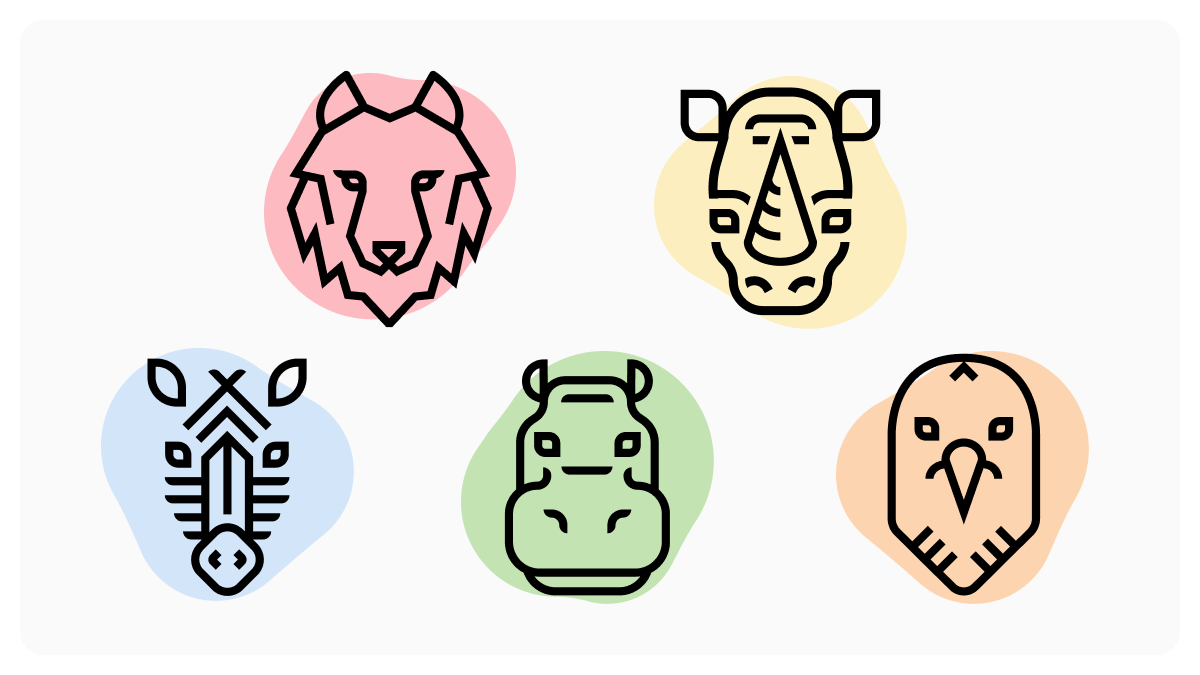Dangerous animals of product management: How to manage challenging stakeholders

📸 Picture this: You are a forward-thinking product manager with a clear product vision, strategy, and roadmap. Yet throughout the product management process, stakeholders come to the table with unvalidated requests. “This must be built”, they insist, “and right away”.
Introducing the dangerous animals of product management: stakeholders and situations that—if left untamed—can get in the way of your product plans.
🦏 Say hello to the RHiNO, or “Really High-value New Opportunity.” Usually a stakeholder in Sales or Marketing, the RHiNO is often heard saying “If we just had feature X, we’d be able to close this massive deal.”
🦛 Perhaps your biggest headache is a HiPPO, or “Highest Paid Person’s Opinion.” HiPPOs are senior leaders accustomed to having the final say—sometimes at the expense of data and input from customers.
🦓 Sometimes, we are all guilty of being ZEbRAs, or “Zero Evidence, but Really Arrogant.” It is, after all, tempting to skip over the validation process when we’re dealing in our areas of expertise.
Finally, make room for the noisy Seagull Manager. Seagull Managers occasionally swoop in, cause a ruckus, then swoop out again, leaving your team to clean up after the mess.
Product managers—do any of these animals sound familiar to you?
6 skills & tactics to influence without authority
Dealing with the dangerous animals of product management means that product managers must master influence without authority — an art that requires a mix of soft and hard skills that we dive into in our ebook.
And while each animal requires a different approach, dealing with them usually involves using one or more of the following skills and tactics.
1. Exercise your empathy
The best starting point for most interactions with a dangerous animal is to understand their perspective. Finding out where they’re coming from will help you get to a place where you can better align their motivations with your product goals.
Works best for: HiPPOs, RHiNOs, and Seagull Managers
2. Embrace transparency
Alignment is easier when everyone understands not just the WHAT, but also the WHY of your product management process. Go the extra mile to provide visibility into your tradeoffs, decisions, customer insights, data, and more (using a purpose-built product management solution like Productboard makes this very easy!). Context like this can empower your dangerous animals to come to the table with more informed ideas.
Works best for: All animals.
3. Empower stakeholders with technical know-how
They say a little knowledge can be dangerous, but not having enough can be even more of a risk. Giving your animals enough technical insight — especially about the impact of technical debt — can help them understand why an idea may not work or be the right choice for your product.
Works best for: WoLFS, HiPPOs, and RHiNOs
4. Do “tiny acts of discovery”
“Tiny acts of discovery” is a concept coined by Dean Peters, the dangerous animal “zookeeper.” Whether you first release updates to a limited audience, use A/B tests to try out new ideas, or research what competitors are up to, simple acts of discovery can quickly support or challenge the assumptions made by your dangerous animals. You can also do tiny acts of discovery by regularly paying off your technical debt.
Works best for: WoLFS, HiPPOs, RHiNOs, ZEbRAs, and Seagull Managers
5. Train them to think like a product manager
Develop and use some simple frameworks for evaluating new ideas then invite your dangerous animals to join in the exercise. These processes can feel more like objective assessments, taking the emotion and ego out of product decisions. Soon, your dangerous animals may start thinking more like product people.
It also helps to demonstrate what it looks like to seek underlying customer needs. Ideally, dangerous animals will start trying to understand customer needs themselves.
Works best for: RHiNOs, ZEbRAs, and Seagull Managers
6. Connect proof with purpose
Whatever arguments and evidence you or your dangerous animals put forward in favor of or against an idea, always tie them back to your company’s mission. If it doesn’t fit with your business purpose then it probably doesn’t belong in your product.
Works best for: HiPPOs, RHiNOs, and ZEbRAs
Get a copy of our new ebook to learn more about the dangerous animals in action and how you can manage the difficult stakeholders in your life using a mix of soft skills and hard frameworks!





